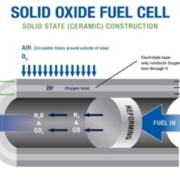A Comprehensive Comparison of Planar and Tubular Solid Oxide Fuel Cells
As the world continues to seek sustainable energy solutions, solid oxide fuel cells (SOFCs) have emerged as a promising technology for clean and efficient power generation. Among various SOFC designs, the planar and tubular architectures are the most prevalent.
Knowing the difference between the two is imperative for individuals, businesses and communities who are exploring new solutions to their energy needs.
In this blog post, we will conduct an in-depth comparison of planar and tubular SOFCs, exploring their respective advantages, disadvantages, and applications. Understanding the differences between these two designs is crucial for making informed decisions in the pursuit of sustainable energy solutions.
Read more



